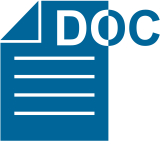PEMBUATAN IN-HOUSE STANDARD BAHAN ACUAN BAKU (STANDARD REFERENCE MATERIAL) LATERIT NIKEL
Abstract
Bahan Acuan Baku (Standard Reference Material) diperlukan untuk mengontrol kebenaran suatu metoda analisis, juga digunakan untuk mengecek presisi, akurasi, pengembangan metoda analisis, pelatihan teknisi, verifikasi dan evaluasi hasil-hasil analisis yang dikeluarkan oleh laboratorium.Tujuan dari pembuatan In-house Standard Laterit Nikel adalah untuk membuat Standar Reference Material (SRM) yang tersertifikasi atau Certified Reference Material (CRM) untuk memperoleh hasil analisis yang lebih akurat dan selalu siap pakai.
Lokasi pemercontoan dilakukan di Daerah Pomala, Kabupaten Kolaka, Provinsi Sulawesi Tenggara (kode conto P-1 dan P-2) dan Daerah Sorowako, Kabupaten Luwu Timur, Provinsi Sulawesi Selatan (kode conto SG-1). Kedua lokasi tersebut dipilih karena mempunyai sumberdaya laterit nikel yang sangat besar.
Data hasil analisis di laboratorium Pusat Sumber Daya Geologi (8 kali pengulangan) pada umumnya memperlihatkan presisi cukup baik (< 10%) kecuali untuk beberapa unsur seperti CaO (P-1 : 11,28%, P-2 : 33,5% and SG-1 : 27,82%), SiO2 (P-2 : 10,27%) and Mg (SG-1: 23,60%).
Hasil analisis kimia Ni, Co, Mg, Fe, Cr, SiO2, Al2O3 dan CaO dari 9 (sembilan) laboratorium sangat bervariasi. Hal ini terjadi kemungkinan karena beberapa laboratorium menggunakan metoda analisis yang berbeda. Ada beberapa data yang sangat ekstrim namun ada juga data yang mendekati.
Downloads
References
DSN, Pedoman 24-1994 (Adopsi dari ISO/IEC Guide 43 : 1984) : Pedoman Pengembangan dan Pelaksanaan Uji Profisiensi Laboratorium.
Davies, A.E. dan Hartati, R.D. 1991, The Preparation of New Quality Control Sample for the Analysis of Sample from Southern Sumatra Geological and Mineral Exploration Project. Direktorat Sumber Daya Mineral.
Hartati, R.D. dan Purbahayati, Y, 1998, Pembuatan Conto Acuan Standar dan Cara Cepat Untuk Penentuan Tungsten dalam Conto Eksplorasi Geokimia di Lapangan. Direktorat Sumber Daya Mineral.
Hartati, R.D. dan Ramdanah, 1999, Penentuan Fe, Co, Ni, Mn dan Cr dalam Contoh Acuan Bijih Laterit Pomala dengan Metoda SSA dan Beberapa Dekomposisi. Direktorat Sumber Daya Mineral. ISSN : 0854 – 4778.
Hutamadi, R., Kuntjara, U., dan Fujiono, H., 2005. Laporan Pemantauan dan Evaluasi Konservasi Sumber Daya Mineral di Daerah Kabupaten Luwu Timur, Provinsi Sulawesi selatan
Kartiwa Sumadi, 2007, Bahan Acuan untuk Uji Kompetensi, Homogenitas Bahan Acuan, Uji Stabilitas Conto Acuan, Kompetensi Kemampuan Pengujian Antar Analis, Puslitbang Teknologi Mineral dan Batubara.
Komite Akreditasi Nasional, DP. 01.34, Juli 2004, Pedoman Perhitungan Statistik Untuk Uji Profisiensi.
Lahar, H., Hararap, I.A., Bagdja, M., Koestiany, A., Sukarsih, R., dan Suhandi, 2002, Laporan Pengawasan, Pemantauan dan Evaluasi Konservasi Sumber Daya Mineral di Daerah Pomala, Kabupaten Kolaka, Provinsi Sulawesi Tenggara.
Thompson, M, 1992, Data quality in applied geochemistry : the requirements, and how to achieve them. Journal of Geochemical Exploration, 44 (1992) 3-22.
Thompson, M dan Howarth, R.J., 1973, Rapid Estimation and Control of Precision by Duplicate Determination, Analyst, 98, 153.
Copyright (c) 2019 Buletin Sumber Daya Geologi

This work is licensed under a Creative Commons Attribution-NonCommercial-ShareAlike 4.0 International License.
Authors whose manuscripts are published agree to the following terms:
The publication rights of all journal manuscript materials published on the Buletin Sumber Daya Geologi website are held by the editorial board with the knowledge of the author (moral rights remain with the manuscript’s author).
The formal legal provisions for access to digital articles in this electronic journal are subject to the terms of the Creative Commons Attribution-ShareAlike (CC BY-SA) license. This means that Buletin Sumber Daya Geologi has the right to store, convert media/formats, manage in the form of a database, maintain, and publish the article without requesting permission from the author, as long as the author’s name is cited as the copyright holder.
Manuscripts published in both print and electronic formats are open access for educational, research, investigative, and library purposes. Beyond these purposes, the editorial board is not responsible for any violations of copyright law.















